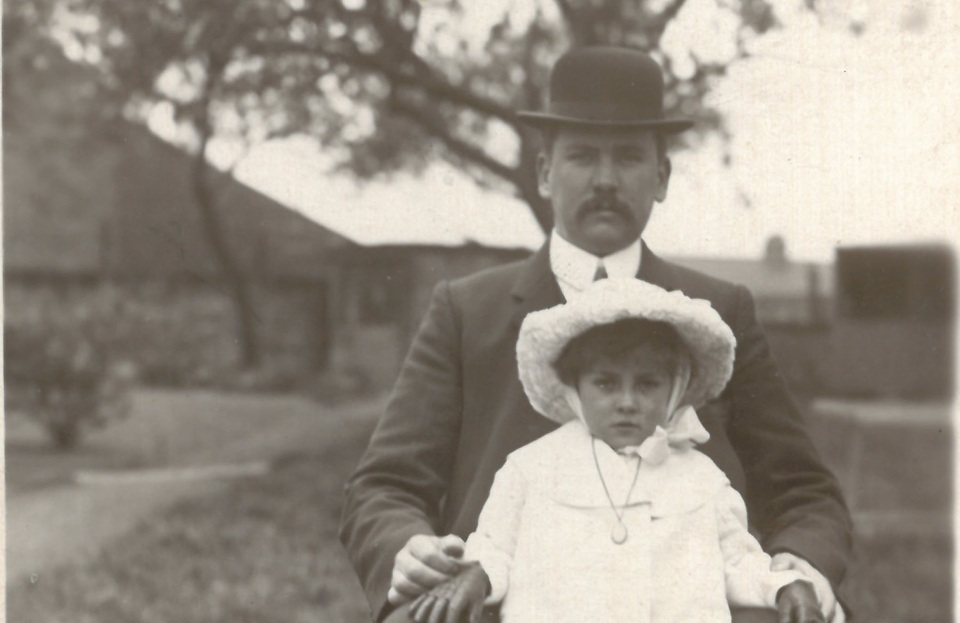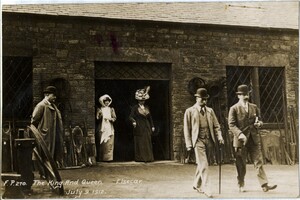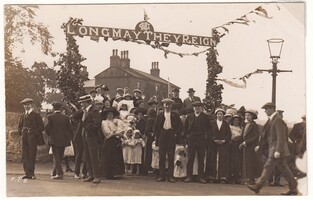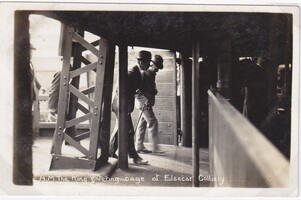The village and people of Elsecar from the 1900s
Elsecar’s landscape has been transformed through industrial development over the last 200 years. By the late 1800s, the two ironworks had closed and the Fitzwilliam family shifted their focus to coalmining. They built the New Yard (Elsecar Workshops) as a central facility for the collieries. The village was developed to support the growing community as people moved here to live and work. Major changes from the early 1900s included the closure of Simon Wood Colliery in 1903, Hemingfield Colliery in 1920 and the Elsecar Branch Canal in 1928. The Elsecar branch of the South Yorkshire Railway became the main transportation route for the site.
In 1902, the Wentworth Woodhouse estate was inherited by the 7th Earl Fitzwilliam, who continued the family’s industrial interest in Elsecar. The last colliery, Elsecar Main, sunk between 1905 and 1908, was the final colliery managed by the Fitzwilliam family before nationalisation in 1947.

William Charles de Meuron Wentworth Fitzwilliam, the 7th Earl Fitzwilliam (1872-1943)
The 7th Earl, known as “Billy,” took over the Wentworth Woodhouse estate in 1902, becoming one of Britain’s wealthiest individuals. He continued the family’s industrial interests in Elsecar - sinking the Elsecar Main Colliery (1905 to 1908) and overseeing the last housing developments on Stafford Avenue, Lifford Place, and parts of Cobcar Lane in 1911. The 7th Earl looked after workers’ welfare and provided support during tough times, including the 1926 General Strike.

A Royal visit
On 9 July 1912, one day after a major mining disaster in Cadeby Main Pit, King George V and Queen Mary visited Elsecar as part of their tour of Yorkshire. At Elsecar Main Colliery, the King was provided with a safety lamp and then taken down underground in a cage to see the mine. The King was said to have “… admired the 39 sleek and plump pit ponies” at the stables located underground. He also tried extracting coal using another miner’s pick. Children were given the day off school, and they lined the streets decorated with bunting hoping to see the royal procession. During the royal couple’s visit to Yorkshire, they were based at Wentworth Woodhouse and visited many places in the area. This again showcased the Fitzwilliam family’s connections with the royals.
Elsecar Main Colliery, 1903-1983
Elsecar Main was sunk to replace Simon Wood Colliery which closed in 1903. The new shafts were deeper and reached wider coal seams, including Parkgate, Silkstone, Thorncliffe, and Swallow Wood. It was the last colliery sunk at Elsecar before its closure in October 1983.
Elsecar Main was a major employer in the area and, after the closure, many workers went to work at the Cortonwood Colliery near Rotherham. A few months later, the Miners’ Strike of 1984-5 began. Subsequently, Elsecar Workshops were sold by British Coal, bringing an end to the village’s era of working collieries.
.jpg)



The end of earldom
The 8th Earl Fitzwilliam, William Henry Lawrence Peter Wentworth Fitzwilliam, inherited the estate in 1943 but died in an air crash in 1948 leaving no male heir. The title was taken over by his cousin Eric Spencer Wentworth Fitzwilliam.
Upon Eric’s death, the title passed to his second cousin, Thomas Wentworth Fitzwilliam, 10th Earl Fitzwilliam. The earldom ended when Thomas passed away on 21 September 1979 leaving no children. The family seat of Wentworth Woodhouse was eventually sold ending Fitzwilliam’s connection with Elsecar.


.jpg)
